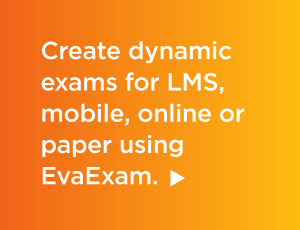 Over the past few years, technology has improved communication, collaboration, and overall effectiveness of higher education.
Over the past few years, technology has improved communication, collaboration, and overall effectiveness of higher education.
Higher Ed institutions have adopted powerful learning management systems, online assessment and evaluation solutions, modern IT management practices, integrated classrooms, and portals where students and faculty can collaborate outside the classroom. These changes have led to better connections between professors and students, as well as better discussions and lectures.
As digital natives, students are technology-savvy so they quickly adopt applications and devices – and they don’t hesitate to criticize or abandon them if they don’t integrate well.

In fact, in higher ed, students fully expect that they will be able to register for a class, communicate with faculty and administration, share things with peers, view their course syllabi and requirements, access learning resources, and submit assignments – all using technology devices including (especially) their mobile phones.
Institutions have had to respond by spending significantly on classroom upgrades, responsive-design applications, endpoint devices, and networks, always with an eye toward security and protection of personal information.
More and more institutions are offering not just continuing education, but also core degree programs entirely online, extending the reach of their programs and increasing revenue with lower corresponding costs. Some institutions are now entirely online. While correspondence courses have always been available, online programs make college achievable for a host of new students who might not otherwise have been able to attend.
Education is becoming more accessible to everyone and more manageable for faculty and administration.
The addition of technology infrastructure beyond the classroom has made it much easier to manage educational duties and requirements. Being able to access core systems from anywhere releases instructors from being tied to their office to manage student communication, grading, course creation and maintenance, and assessment.
Instead of requiring campus real estate for finals and midterms, for example, instructors can develop cheat-resistant online assessments that provide more extensive and accurate results with less scoring effort. Students can also work anywhere, on their own schedule and appreciate the more immediate feedback made possible by technology advancements. Administrators enjoy the reduced load on campus resources.

In fact, the increasing prevalence of technology infrastructure has ushered in a wave of pedagogical and practical innovation. Innovations such as “flipped learning,” where students view recorded lectures or readings extended beyond traditional textbooks and classroom time is spent on meaningful discussion, are challenging traditional approaches. Massive Open Online Courses (MOOCs) make courses easier for non-traditional students to attend and participate in. With increased technology, instructors can add interactive elements with much less effort, thus engaging students more thoroughly.
In the next few years, technology innovation will distinguish leading institutions, but the basics are within reach of even the smallest schools.
Institutions will see increasing demand for networks, applications and devices that support innovation as well as adding value to learning. Advanced technology will become an even greater facet of a school’s competitive advantage. In some cases it is already reducing the cost of higher ed while extending it to more people, despite normal geographical, time, or disability-related limitations.

Delivery of an education will be increasingly integrated with the available learning vehicles. College and university IT departments will need to become more agile and able to respond to changing conditions. They’ll need to look outside the institution for expert help in running day to day needs, empowering their current staff, optimizing their fleets of devices, controlling costs and device proliferation, and the delivery of new projects.
Faculty, under pressure to use multiple applications and devices, will turn to their institution and press for training and digital workspaces. They will gravitate toward schools who have their tech together, and who help them adopt new tech through professional development opportunities.
Institutions will need to put increasing emphasis on security, performance, and availability of their networks and devices. Role-based access and control will result in individual students, faculty, and administrators having highly personalized dashboards and portals. Advanced schools already offer them.
 Scarce resources will force change.
Scarce resources will force change.
The cost of basic enabling technology will continue to decrease – for example, providing a specialized device to students in a specific course or major, or sourcing portable hard drives for graphic design students.
However, where costs will increase on a per-student/per-faculty basis is the ability to configure, support and troubleshoot issues – such as creating personalized portals, handling network connectivity and access issues, or mitigating security breaches. This is because there aren’t enough skilled IT administrators in the United States, so labor is at a high premium. That will in turn cause schools to “subscribe” to outsourced services.
Scantron already works with approximately 30,000 schools across the country – including K-12 and higher ed institutions – and sees firsthand how technology is changing educational culture. We are actively developing solutions to technology problems that schools need to solve. Specifically we focus on helping them develop robust IT roadmaps, lock down environments, run effective cybersecurity models, optimize existing assets, support networks and devices, and deliver complex projects.


Social
View our latest posts or connect with us below on Social Media.